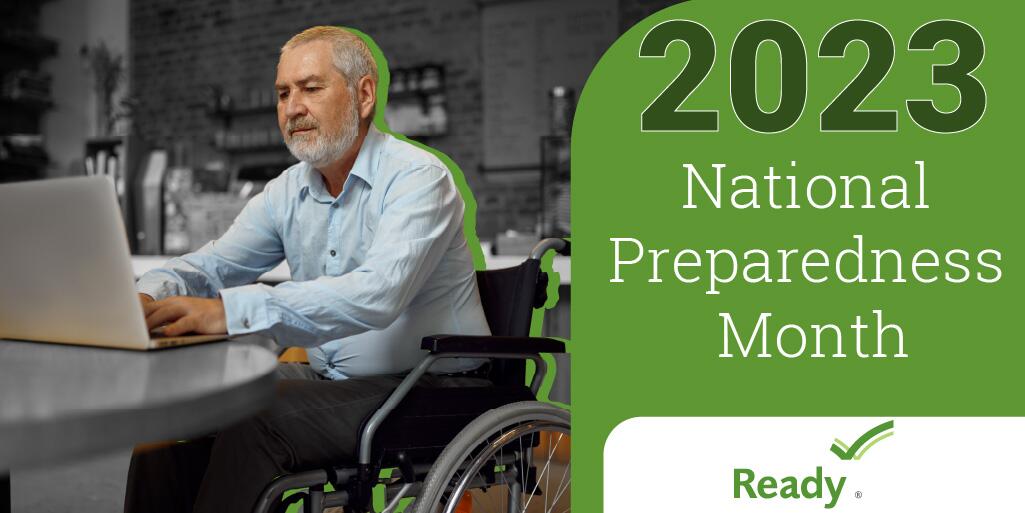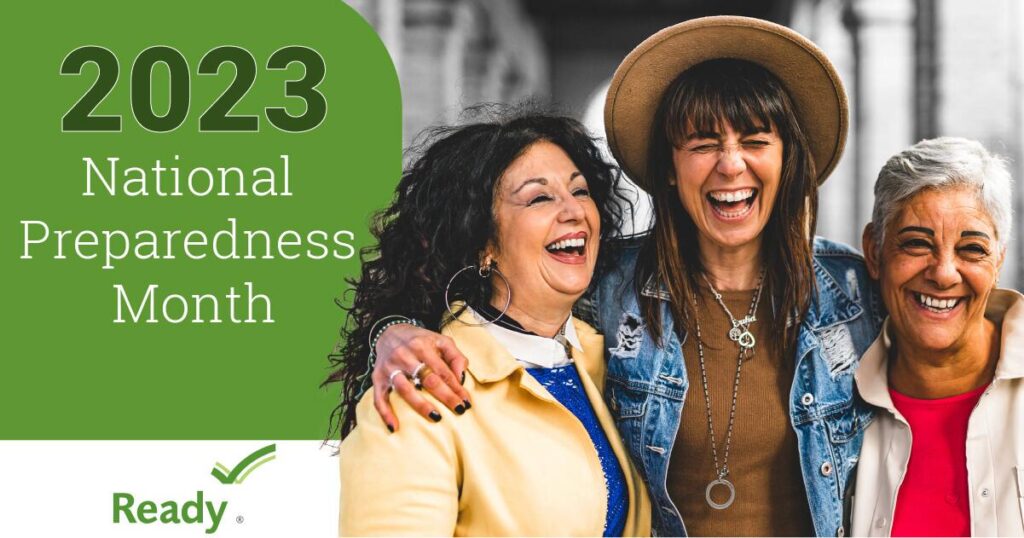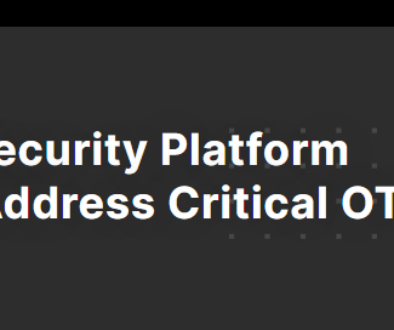National Preparedness Month & What It Means For You

Author: Marie Strawer, UMSA Managing Director
September 7, 2023
As established by the Federal Emergency Management Agency (FEMA) in 2004, September is National Preparedness Month and serves as a time for everyone to prepare for emergencies. The 2023 theme for National Preparedness Month is “Taking Control in 1, 2, 3.” This theme empowers everyone, especially older adults, to 1) assess their needs, 2) make a plan, and 3) engage their support network to stay safe when disaster strikes. Let’s look at the key messages for this year’s campaign, key steps to take, and where to get information.
Key Messaging
By the year 2035, the U.S. Census Bureau projects that there will be more Americans over the age of 65 than under the age of 18. Over the next decade, it is imperative that the growing older adult population become more aware of their risks and better prepared for them.
Older adults can face more significant risks regarding the multitude of extreme weather events and emergencies we now face, especially if they are living alone, have low income, have a disability, or live in rural areas. Those who work with and support older adult communities can access Ready.gov’s new webpage at Ready.gov/older-adults for initial preparation messaging, graphics, and resources.
Regardless of if you are an older adult or a caregiver, everyone knows of someone who is an older adult. This means that people of ALL ages can be more prepared at home and at work! Here’s how:
Key Steps
Older adults and their caregivers can overcome these potential obstacles and increase their resilience by “Taking Control in 1, 2, 3.” These steps can reduce the fallout of large-scale emergencies for citizens of all ages. Take these steps if you are an older adult or encourage your friends and loved ones to take them!
- Assess your needs. Older adults and their caregivers need to ensure they understand all of the patient’s medical needs. Determine if any of your medications need refrigeration or if you rely on mobility or assistive devices. You’ll need to understand just how these variables factor into what is needed to stay safe in a disaster or emergency.
- Make a plan. Once you assess your needs, you can tailor your plans to make sure your needs are met. This can include building a kit that includes extra medication, having a way to store medications in an emergency, and planning for your pets or service animals.
- Engage your support network. Reaching out to family, friends, and neighbors can help you build a support network to assist you before, during, and after a disaster or emergency. Share each aspect of your emergency plan with everyone in this network, including a friend or relative in another area who would not be impacted by the same emergency and who can help if necessary. Make sure everyone knows how you plan to evacuate your home or workplace and where you will go in case of a disaster. Ensure that someone in your personal support network has an extra key to your home and knows where you keep your emergency supplies. Practice your plan with those who have agreed to be part of your personal support network.
Where to get information
Access to information is exciting and valuable, as it prepares you for and helps you respond in an emergency from wherever you are. Where can we ALL go for mobile emergency management and response? Let’s take a look.
- The American Red Cross has a first aid app that will walk you through everyday first aid scenarios in case you need to know which steps to take. The app also offers safety tips and is fully integrated with 911 so you can quickly call for additional help. The preloaded information means that you’ll have access to it even without an internet connection.
- FEMA’s app includes disaster safety tips, an interactive emergency kit list, and information about emergency meeting places, including maps with open shelter information. The app also allows you to report disasters and submit photos, information that will be shared with others.
- You probably have at least one weather app on your phone already. These apps are a helpful tool for keeping everyone informed and for sending alerts when severe weather is approaching. Because weather apps are commonly used, they can be a valuable resource in keeping you, your friends and loved ones, and even your colleagues and employees more informed.
The world is mobile, and more than ever, we expect to be able to find information on-the-go. Emergencies cannot be planned for, but chances are you’ll have a mobile device on you when an emergency happens. Mobile apps cannot replace training, preparedness, and experience, but they can be helpful tools in an emergency.
Thank You for Being More Prepared!
People of all ages can benefit from many of the tips given to older adults, including assessing their needs, making a plan, and engaging their support network. It’s as easy as “Taking Control in 1,2,3.”




